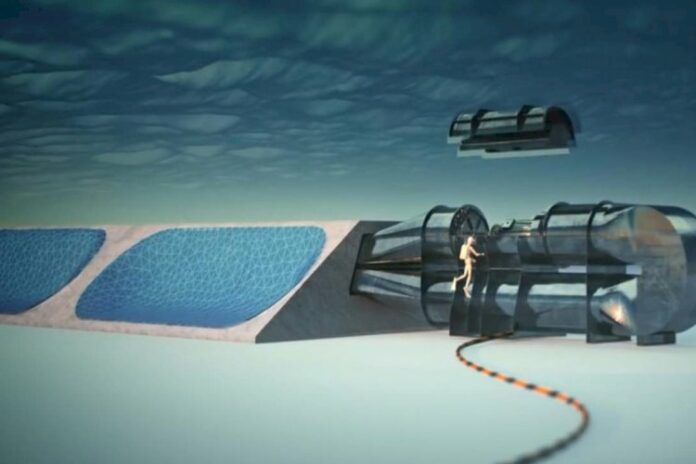The research will carry out a techno-economic appraisal of extending Bombora’s mWave™ technology into an offshore environment and will investigate the feasibility of co-location with floating wind structures.
Bombora’s patented membrane mWave wave energy converter offers a unique opportunity to rapidly develop a floating wave platform solution. This solution offers major advantages in relation to increased infrastructure utilisation and maximising capacity.
Sam Leighton, MD of Bombora said:
“We believe Bombora’s mWave technology offers an innovative solution that can meet the demands of the rapidly expanding offshore energy industry and reduce the levelised cost of energy. Increasing the cost effectiveness of projects by sharing the expense of joint infrastructure, such as the floating platform, moorings and export grid connection to shore will inevitably drive down costs. Our research project with ORE Catapult is an important development stage to prove this potentially market disruptive solution.”
Dr Paul Ellsmore, MEECE Programme Manager for ORE Catapult added:
“This collaborative project cuts right to the heart of two important areas for innovation in offshore renewable energy right now – the development of wave energy and floating wind. To unlock the potential of co-locating these two technologies could be potentially game-changing for the sector.
Wales is the ideal location for this type of innovative project, being home to a number of wave and tidal developers and a prime location for floating wind development. We will apply our unique combination of technical expertise and research and testing facilities at MEECE to support innovative projects such as these and companies like Bombora.”
The UK has enough natural resources of offshore wind, wave, and tide to provide all the country’s energy requirements, including transport and heating, with spare for export to Europe.
The National Renewable Energy Laboratory (NREL) suggests global offshore wind generating capacity will be in excess of 500 GW by 2050.
Global investment in offshore wind projects between now and 2030 is likely to exceed £250bn. Offshore renewable energy is on course to provide much of the affordable and secure power needed to grow the UK economy and, when combined with the global export potential, represents the largest clean growth opportunity for the UK economy.
Bombora’s 1.5MW mWave Pembrokeshire Demonstration Project, supported by £10.3M European Regional Development Fund through the Welsh Government, is on schedule. Full marine consent for installation off the coast of Pembrokeshire has been granted as the project moves into the assembly phase. Taking mWave further offshore will increase the capacity of the technology and open new markets and opportunities for large scale utility generation.
Chris Williams, Bombora’s Commercial Manager, said:
“Collaborating with a world-class research and test institution such as ORE Catapult’s MEECE places Bombora at a big advantage to capitalise on the floating offshore market opportunity. We are committed to driving innovation in the renewable energy sector and to making the advancements needed to benefit the environment and consumers.”
ORE Catapult has recently opened its Marine Energy Engineering Centre of Excellence (MEECE) in Pembroke Dock, South West Wales. MEECE aims to accelerate the growth of the UK supply chain in the offshore renewable energy sector, leading to increased jobs, productivity and exports.
MEECE will work with Welsh Universities and with the Marine Energy Test Area, to deliver innovation projects on behalf of Welsh companies, to demonstrate, verify and validate new technologies.



